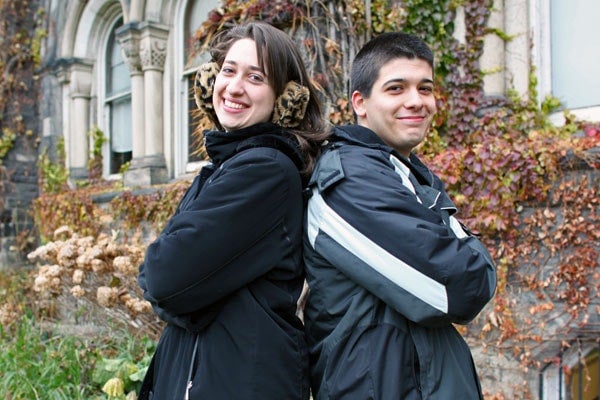
From Brazil to U of T: Meet the students of Science Without Borders
Published: December 5, 2012
For Bruno Artacho, studying at the University of Toronto offers opportunities for learning that extend far beyond the lecture halls, libraries or athletic facilities.
“The Canadian culture is more structured and organized: for example, everybody waits for the signal when crossing the streets here. But in Brazil it’s a mess,” laughs the electrical and computer engineering student from São Paulo State University (UNESP).
Artacho is just one of the many Brazilian students participating in the Ciência sem Fronteiras (CsF or Science Without Borders) program, launched in 2011 by the Brazilian government. The program aims to send more than 100,000 Brazilian students to study abroad in the areas of science, technology, engineering and mathematics by 2015.
This is the first year CsF is working with Canadian universities, and it is one of many programs that help bring international students to U of T, further fostering a global community.
“It’s a very good opportunity, there’s no opportunity in the past equal to this,” says Lara Bertini Vieira, a student from the University of São Paulo, who is studying electrical and computer engineering.
At a recent reception for the students co-hosted by Mr. Alfonso J. Sena Cardoso, Consul General of Brazil in Toronto, and Judith Wolfson, vice-president of university relations, the students were hugely enthusiastic about their academic and research experiences.
“The University of Toronto sees Science Without Borders as a tremendous opportunity for some of Brazil’s top students to study at U of T,” says Wolfson. “It allows Canadians and Brazilians to share diverse perspectives, deepen knowledge, and collaborate in ways that can lead to insight and discovery.”
 Márcia Hazzan, (pictured at right) another CsF student from the University of São Paulo, jumped at the opportunity to study pharmacy and biochemistry at the U of T this year.
Márcia Hazzan, (pictured at right) another CsF student from the University of São Paulo, jumped at the opportunity to study pharmacy and biochemistry at the U of T this year.
“I chose U of T because it’s the best university in Canada,” says Hazzan. “I’m very impressed with the university itself, it’s amazing, it’s so beautiful. Sometimes I can’t believe I’m staying here.”
The multiculturalism within Toronto has also provided pleasant surprises for the visiting students.
“Toronto is a very multicultural city. I thought I would be meeting a lot of Canadians, but most of the people are actually not [from Canada],” explains Hazzan. “I wouldn’t have a chance to meet all these people if I weren’t here.”
“It makes it easier to adapt; when I go to Little Italy I feel like I’m with my family. São Paulo is the same; it has a lot of cultures,” says Artacho, who jokes about the cold weather being a downside to his foreign studies.
“Being in another country, we can compare what Canada is doing better than Brazil and what Brazil is doing better than Canada,” he adds. “Comparing this we can find a better solution for both countries, we have differences so having this knowledge about both places is important for learning.”
A total of 124 students are participating in the program at U of T, on all three campuses, in the faculties of Engineering, Arts & Science, Kinesiology & Physical Education.
“The University of Toronto is very pleased to be hosting the CsF students. U of T has by far the largest number of CsF students in Canada and they are a talented group of students,” says Miranda Cheng, director of the Centre for International Experience. “We hope that this first wave of CsF students will help to deepen the University of Toronto’s connections to Brazil.”
The program offers insights and discovery that go beyond their academic disciplines, students say.
“During the first week I went to greet a Canadian, and I just did what I would in Brazil – I went, hugged and gave a kiss,” laughs Bertini Vieira.
“It’s what we do in Brazil, but it was an extremely awkward situation, I don’t do that anymore.”



